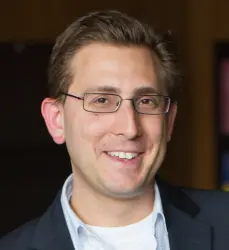At a time of high returns to college but rising college costs, the Kalamazoo Promise provides simple and generous college financing. This program, often simply called the Promise, was announced on November 10, 2005, and offers large college tuition subsidies to graduates of Kalamazoo Public Schools (KPS). Funded by anonymous private donors, the Promise pays up to 100 percent of tuition and fees for any public postsecondary institution in Michigan and is “first- dollar,” so aid is not reduced by other scholarships. The only conditions to qualify for the Promise are that a student be continuously enrolled in KPS since at least ninth grade, that he or she live in the school district and graduate from KPS, and that he or she gets into any public college in the state.
The Kalamazoo Promise, being the first such “place-based” scholarship, has generated much interest in the media and from other school districts.[1] Since 2005, more than 30 communities around the country have adopted Promise-style programs, in some cases using public funding or imposing additional requirements for eligibility. While there is a large literature on the effects of financial aid—including state merit-based scholarship programs—on postsecondary education outcomes, little is known about the effectiveness of place-based scholarships, which tend to be far more generous and open to a broader swath of students. With place-based scholarships becoming more common and state appropriations to public colleges having declined over the past 15 years (Baum and Ma 2014), understanding the potential for alternative approaches to help finance postsecondary education will only grow in importance.
In this paper, we estimate the effects of the Kalamazoo Promise on postsecondary education outcomes, including attendance, persistence, and degree completion. To identify Promise effects, we estimate difference-in-differences models that compare outcomes of eligible students to those of ineligible students both before and after the announcement of the Promise, conditional on available student characteristics. As the Promise’s tuition subsidy varies with the length of continuous enrollment in the school district, we exploit a large change in generosity in which the scholarship pays at least 65 percent of tuition and fees for students enrolled by the beginning of ninth grade but zero for students enrolled afterward. The unexpected announcement of the Promise in the fall of 2005 created a situation in which some KPS students found themselves eligible for at least 65 percent of future tuition subsides, while others discovered they were ineligible for the scholarship. This situation thus resembles a natural experiment in which one group of students is entitled to tuition subsidies and another group is not entitled to anything. Our core identifying assumption is that trends in unobservables did not change between Promise- eligible and -ineligible students around the time of the Promise announcement, and we explore the sensitivity of this assumption in several robustness checks.
We examine both shorter-term outcomes, such as enrollment, as well as medium- and longer-term outcomes, such as credits attempted and credentials earned. We find substantively large and statistically significant effects of the Promise on many postsecondary outcomes, including the following three: 1) the probability of any college enrollment as well enrollment at a four-year college, 2) the cumulative number of credits attempted within two to four years after high school graduation, and 3) the probability of obtaining any postsecondary credential as well as the probability specifically of obtaining a bachelor’s degree.
Due to the Promise, we estimate that the chance of students enrolling in any college within six months of high school graduation increases by 14 percent, and the chance of students enrolling in a four-year college is estimated to increase by 34 percent. Based on our estimated Promise effects, the cumulative number of credits attempted increases by 15 percent as of two years after high school graduation, and these effects persist. At two years out, the effects imply an additional class attempted; at four years out, they imply an additional two to three classes attempted. As of six years after high school graduation, the Promise increases the percentage of students earning any postsecondary credential by 12 percentage points, from a pre-Promise baseline of 36 percent to 48 percent; this represents a proportional increase in credential attainment of one-third. About four-fifths of this boost in postsecondary credentials is due to more students earning a bachelor’s degree. The credential attainment effects imply a large internal rate of return in increased earnings—over 11 percent—relative to the costs of the Promise’s tuition subsidy.
These Promise effects are not driven by more advantaged students. The college completion results (as well as enrollment and credits-attempted results) are statistically indistinguishable and quantitatively similar for students regardless of whether they qualified for a lunch subsidy, our proxy for family income. Promise effects are at least as great and often greater for nonwhite students than for white students.
Importantly, these Promise estimates are conservative in two ways. First, by comparing Promise-eligible versus -ineligible students, these estimates omit possible community-wide or school-wide spillover effects of the Promise. The Kalamazoo community and KPS have used the Promise to encourage a more college-going culture among parents and students, and have added services to increase the likelihood of college success. Any community or district changes might also affect Promise-ineligible students. In addition, Promise-ineligible students may benefit from positive peer effects from Promise-eligible students.
Second, our estimates are restricted to students who are high school graduates. This restriction occurs because we link KPS individual student records with National Student Clearinghouse data on these same students’ postsecondary experiences. We can link such data only for KPS graduates, for whom such records have been requested by KPS. Because we condition on students graduating from KPS, our estimates omit any Promise effects on graduating from high school. Our estimates of postsecondary success might be attenuated if the Promise results in more marginal students being included among KPS graduates.
In the next section of this paper, we discuss how the current study fits into the large literature on merit scholarships and the smaller literature on place-based scholarships. In the third section, we describe the institutional details of the Kalamazoo Promise. We follow by outlining our data and methodology and then present our results. We also evaluate the strength of our identification assumptions through several robustness checks and examine heterogeneity of Promise effects across different student groups. We conclude by discussing implications of our results for policy.
[1]
See, for example, Bartik and Lachowska (2014); Burke (2014); Caplan-Bricker (2014); CBS News (2007); Economist (2008); Fishman (2012); and NBC News (2013).
The Brookings Institution is committed to quality, independence, and impact.
We are supported by a diverse array of funders. In line with our values and policies, each Brookings publication represents the sole views of its author(s).





